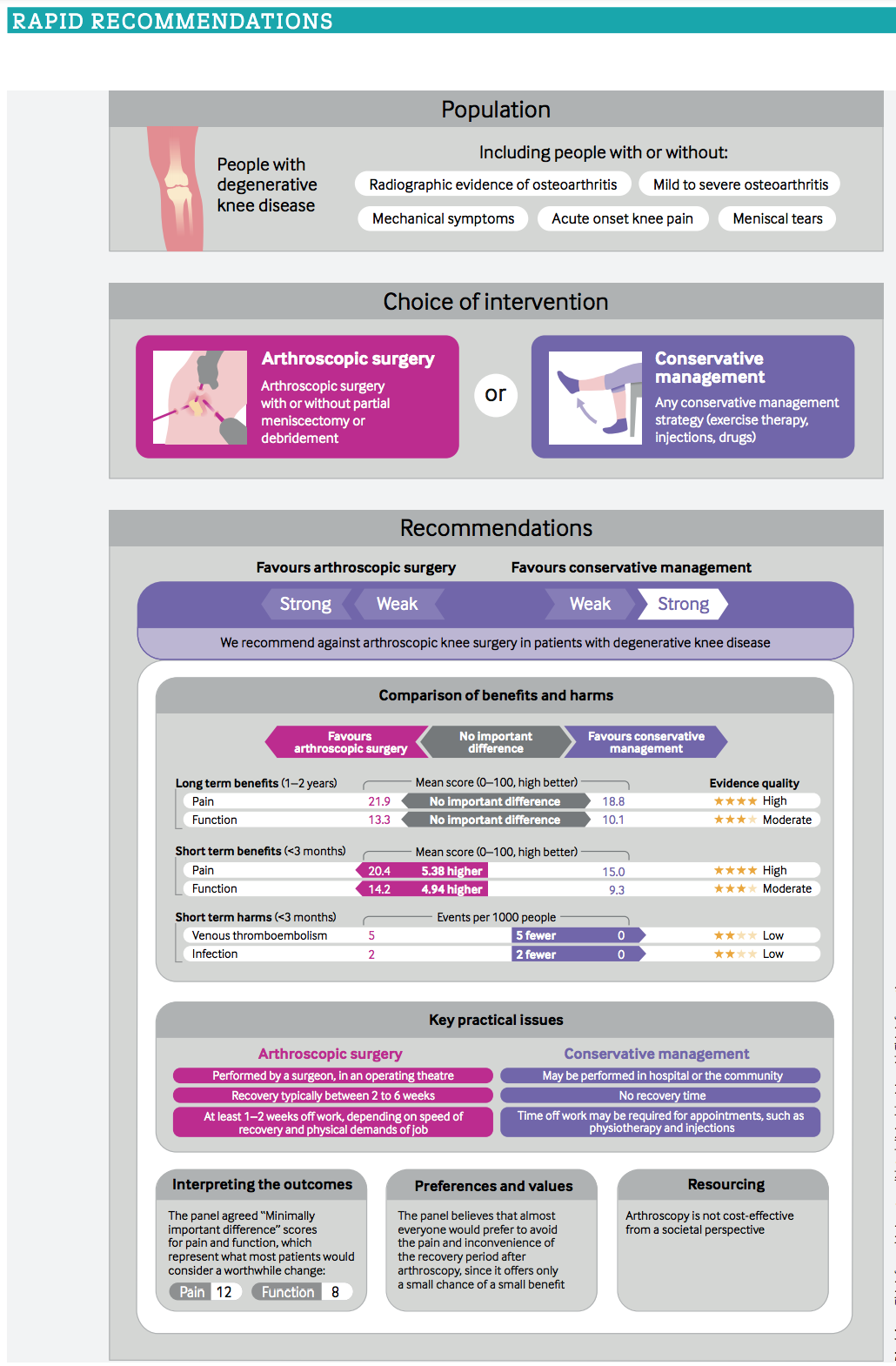Laurie's Blogs.
Aug 2019
Joint Arthroscopy - Yes or No?
I anticipate that this could be a very controversial blog. My saving grace is that I’m just the messenger… so, Don’t Shoot!!!
I was directed to a paper thanks to another blog post. The paper in question: https://www.bmj.com/content/bmj/357/bmj.j1982.full.pdf entitled Arthroscopic surgery for degenerative knee arthritis and meniscal tears: a clinical practice guideline essentially goes through the pros and cons of doing arthroscopy for patients with degenerative medial meniscal tears. Well, if this is where things are at with humans, then why would the same not hold true for dogs? I might go one step further and say that it could hold true for canine shoulders as well and labrum tears or cartilage fissuring. Okay, let’s dive in!
A randomized controlled trial published in The BMJ in June 2016 found that, among patients with a degenerative medial meniscus tear, knee arthroscopy was no better than exercise therapy. A panel then met to discuss and review the growing body of evidence which suggests that arthroscopy is not effective for many different knee pathologies which have been traditionally managed by arthroscopy.
Firstly, what is considered a “Degenerative Knee”?
“Degenerative knee disease is an inclusive term, which many consider synonymous with osteoarthritis. We use the term degenerative knee disease to explicitly include patients with knee pain, particularly if they are >35 years old, with or without:
– Imaging evidence of osteoarthritis
– Meniscus tears
– Locking, clicking, or other mechanical symptoms except persistent objective locked knee
– Acute or subacute onset of symptoms
Most people with degenerative arthritis have at least one of these characteristics. The term degenerative knee disease does not include patients having recent debut of their symptoms after a major knee trauma with acute onset of joint swelling.”
What did they decide?
This is best presented in the Infographic that was created in the paper.

I find this interesting, and certainly it has fit with some of the clinical findings I’ve experienced. Some dogs with clear meniscal signs do well with therapy. I’ve had dogs where I’ve warned the owner that they might require arthroscopy/surgical removal, but I was talked into a trial of conservative management…and it worked! I shouldn’t have been surprised!
However, when surgical intervention is currently deemed as the ‘highest caliber of care’ and a primary intervention in Vet Medicine and in human medicine we are leaning away from that perspective (or at least it’s not the first option of care in many injuries), it’s hard to play both sides of the field!!
Okay, but I think that this paper would at least give us reason to pause before jumping into arthroscopy.
Now, here’s where I might get shot. I’m going to extrapolate that perhaps this same thought process and rationale could fit for the medial compartment syndrome dogs as well. I think there’s a big push right now to jump in surgically on these cases. Perhaps it’s the clientele I have, but most, if not all of my clients don’t want to go that route. In fact, that’s why I own a shockwave.
Rewind to about 4 or 5 years ago, and I had a young Cane Corso with a front leg lameness. No finding on radiographs, but a consistent click with testing abduction angle, and an increased abduction angle. I laid out all of the options and surgeons / surgical interventions. However, the answer was, ‘We’re not really willing to go down that route, what can you do?’ I was only getting ‘so’ far in my therapy with exercise, laser, manual therapy and acupuncture… so I thought why not test drive a shockwave unit. Well, that made the difference! And to be honest, I’ve never had to refer one for surgery since! (Not that shockwave alone did the trick, but as part of the program, it sure as heck made a difference!)
So, if conservative management is equal to surgical management for degenerative knees in long-term outcomes… then why not in other joint conditions. And… why not in dogs?
Spin your brain on that for a while, and shoot me a line to tell me your thoughts or experiences!
Cheers!
Laurie


